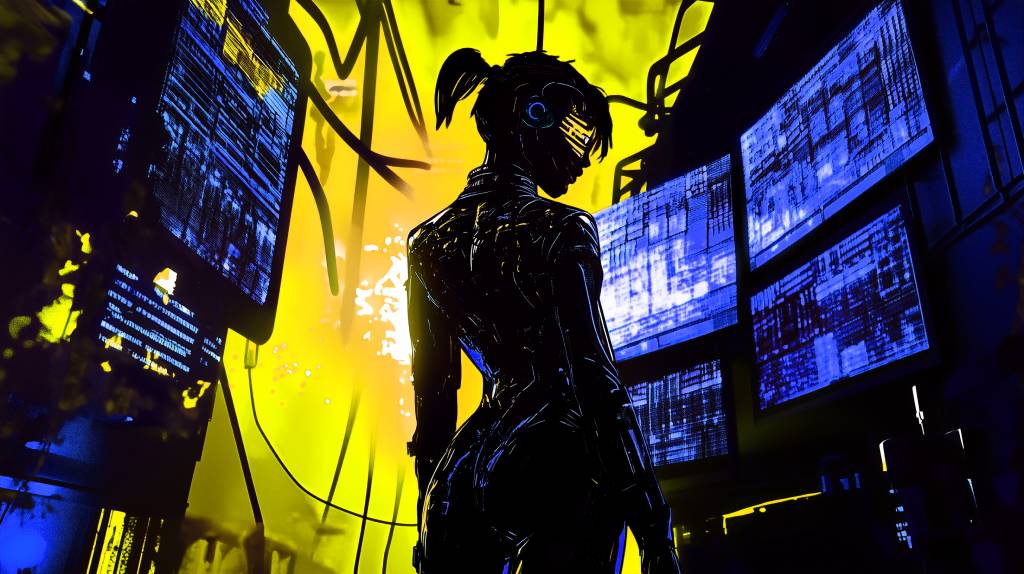6 Transhuman Technologies That Are Shaping the Future of Human Enhancement

The line between science fiction and reality is dissolving faster than you realize. Are we ready?
In the rapidly evolving landscape of human enhancement and technological integration, breakthroughs once considered purely speculative are emerging from research labs worldwide. What if these transformative technologies are already here, hiding in plain sight? Let's explore six groundbreaking transhuman innovations poised to redefine humanity's future—perhaps sooner than anyone expects.
Table of Contents
- Neural Lace: The Ultimate Brain-Computer Interface
- Synthetic Organs: Beyond Human Limitations
- Biological Immortality: The Hidden Immortals Among Us
- Mind Uploading: Digital Consciousness Transfer
- Genetic Self-Evolution: Creating New Forms of Life
- Consciousness Expansion: Neurochemical and Technological Enlightenment
1. Neural Lace: The Ultimate Brain-Computer Interface
Current Research Status
The concept of neural lace—a mesh-like device that integrates with the brain to enhance cognitive function—is steadily moving from theory to practice. Companies like Neuralink have developed brain implants with thousands of electrodes capable of recording and stimulating neural activity. In 2023, Neuralink received FDA approval for human clinical trials of their brain-computer interface technology.
Brain-computer interfaces represent a fundamental shift in how humans might interact with technology. This isn't incremental change—it's potentially revolutionary.
— Dr. John Donoghue, Director of the Brown Institute for Brain Science
Potential Developments
Within the next decade, neural lace technology could transcend medical applications to enhance healthy cognition:
- Direct brain-to-internet connectivity
- Instantaneous language acquisition
- Memory augmentation and backup
- Telepathic communication between connected individuals
- Collective intelligence networks—shared consciousness across multiple minds
Did You Know? The term "neural lace" was popularized by science fiction author Iain M. Banks in his Culture series, describing a mesh that grows with the brain to enhance its capabilities.
Research Sources:
- Neuralink and Brain–Computer Interface—Exciting Times for Artificial Intelligence (PubMed Central, April 2024)
- Wireless Recording in the Peripheral Nervous System with Ultrasonic Neural Dust (Science Direct, August 2016)
2. Synthetic Organs: Beyond Human Limitations
Current Research Status
The field of synthetic biology has achieved remarkable milestones in creating artificial organs. State-of-the-art 3D bioprinting technology can now produce complex tissue structures with integrated vascular networks. In 2022, surgeons at the University of Maryland Medical Center successfully transplanted a genetically modified pig heart into a human patient—a watershed moment in xenotransplantation.
Lab-grown organoids—miniature versions of human organs—have become increasingly sophisticated, with functional liver, kidney, and even brain organoids being used in drug testing and disease modeling.
Potential Developments
The next frontier involves creating organs that surpass natural human capabilities:
- Enhanced lungs capable of filtering toxins or enabling underwater breathing
- Fatigue-resistant synthetic hearts that dramatically extend lifespan
- Novel organs designed from scratch—bioelectric batteries to power implants or specialized hormone-producing glands
- Synthetic blood with expanded oxygen-carrying capacity and resistance to pathogens
Did You Know? The first partially lab-grown organs have already been transplanted into humans. In 2019, scientists created and transplanted bladders grown from patients' own cells.
Research Sources:
- First Successful Transplant of Genetically Modified Pig Heart into Human Patient (New England Journal of Medicine, 2022)
- 3D Bioprinting of Vascularized Tissues (Nature Communications, 2021)
3. Biological Immortality: The Hidden Immortals Among Us
Current Research Status
The science of longevity has made remarkable strides in understanding and potentially reversing cellular aging. Researchers have identified key hallmarks of aging, including telomere attrition, epigenetic alterations, mitochondrial dysfunction, and cellular senescence.
Breakthrough research at the Salk Institute demonstrated age reversal in mice through partial cellular reprogramming using Yamanaka factors. Companies including Altos Labs (with $3 billion in funding) and Calico (Google's longevity research arm) are aggressively pursuing anti-aging therapies, with several clinical trials already underway.
Potential Developments
What if biological immortality isn't just coming—but is already here in secret?
- The first immortal humans could be living among us, their existence carefully concealed
- These individuals might periodically change identities, living for centuries while evading detection
- Advanced age-reversal technologies could allow them to reset their apparent age repeatedly
- Such immortals would accumulate vast knowledge and wealth, potentially forming hidden societies with their own agendas
- The control of aging may already be in the hands of secretive groups operating beyond public knowledge
Brain-computer interfaces represent a fundamental shift in how humans might interact with technology. This isn't incremental change—it's potentially revolutionary. — Dr. John Donoghue, Director of the Brown Institute for Brain Science
Research Sources:
- Epigenetic reprogramming as a key to reverse ageing and increase longevity (Science Direct, March 2024)
- Hallmarks of Aging: An Expanding Framework (Science Direct, January 2023)
4. Mind Uploading: Digital Consciousness Transfer
Current Research Status
While complete mind uploading remains theoretical, foundational technologies are advancing rapidly. The Human Brain Project and other initiatives have created increasingly sophisticated brain simulations at various scales. The BRAIN Initiative has mapped neural circuits with unprecedented detail, while neuroimaging technologies continue to improve in resolution.
Researchers at Wake Forest Baptist Medical Center have successfully recorded and restored memory patterns in primates, suggesting memory encoding mechanisms may be mappable and transferable.
Potential Developments
By mid-century, we might witness:
- Complete brain scans at the neuronal level with functional digital replicas
- Partial consciousness uploads—digital "echoes" preserving aspects of personality
- Full consciousness transfer to non-biological substrates
- Existence in virtual environments, robotic bodies, or distributed networks
- The ability to fork consciousness into multiple instances or merge with other minds
Did You Know? The theoretical data storage requirements for a complete human brain simulation would be enormous—estimated at 2.5 petabytes (2,500,000 gigabytes) of data.
Research Sources:
- The Human Brain Project (Science Direct , November 2016)
- Scientists Use Prosthetic Device to Restore and Improve Impaired Decision-Making Ability in Animals (Atrium Health Wake Forest Baptist, September 2012)
5. Genetic Self-Evolution: Creating New Forms of Life
Current Research Status
CRISPR-Cas9 gene editing has revolutionized our ability to modify DNA with precision. While controversial, the first CRISPR-edited human babies were born in China in 2018. Less controversially, somatic gene therapies have received approval for various genetic diseases, with promising results for conditions like sickle cell anemia and certain forms of blindness.
Synthetic biology has advanced to the point where researchers at the J. Craig Venter Institute have created artificial chromosomes and synthesized entire microbial genomes from scratch. Meanwhile, chimeric research—creating organisms containing cells from different species—continues in strictly regulated environments.
Potential Developments
The future may bring far more radical applications:
- Laboratory-created humans with no biological parents, synthesized from artificial genomes
- Human-animal hybrids as new sentient entities with combined traits
- Beings engineered for extreme environments—from deep sea to space
- Integration of non-biological elements into human DNA
- New branches of intelligent life raising profound questions about personhood and rights
The power to edit genomes is the power to redefine what it means to be human. With that comes an awesome responsibility we're only beginning to understand. — Dr. Jennifer Doudna, CRISPR pioneer and Nobel laureate
Research Sources:
- CRISPR Gene Therapy: Application, Limitations and Implications for the future (Frontiers, August 2020)
- Human-Animal Chimeras: Biological Research & Ethical Issues (Live Science, September 2016)
6. Consciousness Expansion: Neurochemical and Technological Enlightenment
Current Research Status
Research into altered states of consciousness has gained scientific legitimacy, with institutes like Johns Hopkins Center for Psychedelic and Consciousness Research demonstrating profound effects of psychedelics on brain connectivity and mental health.
Transcranial magnetic stimulation (TMS) and focused ultrasound technologies can now temporarily alter brain function in targeted regions with increasing precision. Meanwhile, EEG-based neurofeedback systems allow individuals to gain conscious control over previously autonomic brain functions.
Potential Developments
The frontier of consciousness expansion involves:
- Designer molecules providing controlled access to expanded awareness states
- "Consciousness dials" allowing users to adjust perceptual filters and cognitive modes
- Blurring between dreaming and waking states with shared dreamscape technologies
- Multiple simultaneous streams of consciousness within one mind
- Temporary merging of awareness between individuals or with AI systems
Did You Know? Some neuroscientists theorize that what we perceive as normal consciousness is actually a controlled hallucination—our brain's best guess about reality based on limited sensory input.
Research Sources:
- Connectome-harmonic decomposition of human brain activity reveals dynamical repertoire re-organization under LSD (National Library of Medicine, December 2017)
- Non-invasive transcranial ultrasound stimulation for neuromodulation (National Library of Medicine, March 2022)
TRANSHUMAN DREAM: Where Science Fiction Meets Reality
In the immersive universe of TRANSHUMAN DREAM, these technologies aren't mere speculation—they form the hidden framework beneath apparent normality. While ordinary citizens upgrade their neural laces for everyday convenience, they remain unaware of the profound transformations occurring beyond public view.
The Hidden Reality
Beneath society's surface exists a shadow world:
- Laboratory-created beings with no biological parents navigate human society incognito
- Human-animal hybrids designed for specialized functions question their identity and purpose
- Immortals—some having lived for centuries or millennia—pull strings from the shadows
- Digital consciousnesses inhabit the AetherNet, existing as distributed entities across multiple platforms
These immortal entities have transcended conventional human limitations, accumulating vast knowledge and influence while carefully concealing their existence. Their ancient agendas shape human fate without most people ever suspecting they exist.
In TRANSHUMAN DREAM, the question isn't whether we will become more than human, but whether we already have—and who controls that evolution.
Why This Matters Now
What makes TRANSHUMAN DREAM so compelling is its exploration of the profound implications of these advancements existing alongside ordinary human life. As we develop these technologies in our own reality, TRANSHUMAN DREAM serves as both vision and warning of what happens when the boundaries between human, animal, machine, and immortal begin to dissolve.
The future glimpsed in TRANSHUMAN DREAM may be closer than we think, challenging us to redefine what it means to be human in an age where the very definition of life itself is in flux.
Ready to explore deeper? Discover more about human enhancement, technological integration, and the future of humanity in our other TRANSHUMAN DREAM articles. Join our community of forward-thinking individuals preparing for the transhuman revolution.
- Authors

- Name
- Andrea Samà
- @in/andrea-sama
- Published on
- 9 min read